It looks like you're using an Ad Blocker.
Please white-list or disable AboveTopSecret.com in your ad-blocking tool.
Thank you.
Some features of ATS will be disabled while you continue to use an ad-blocker.
share:
The discovery of rock carvings believed to be tens of thousands of years old in India's western state of Maharashtra has greatly excited archaeologists who believe they hold clues to a previously unknown civilisation, BBC Marathi's Mayuresh Konnur reports.
The rock carvings - known as petroglyphs - have been discovered in their thousands atop hillocks in the Konkan region of western Maharashtra.
Mostly discovered in the Ratnagiri and Rajapur areas, a majority of the images etched on the rocky, flat hilltops remained unnoticed for thousands of years.
"Our first deduction from examining these petroglyphs is that they were created around 10,000BC," the director of the Maharashtra state archaeology department, Tejas Garge, told the BBC.
Prehistoric art hints at lost Indian civilisation
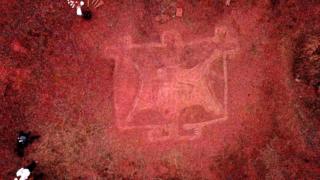
There are thousands of these carvings and they depict many different animals, humans and even geometric designs. This is said to be evidence of a unknown civilization that lived 10,000 years ago.
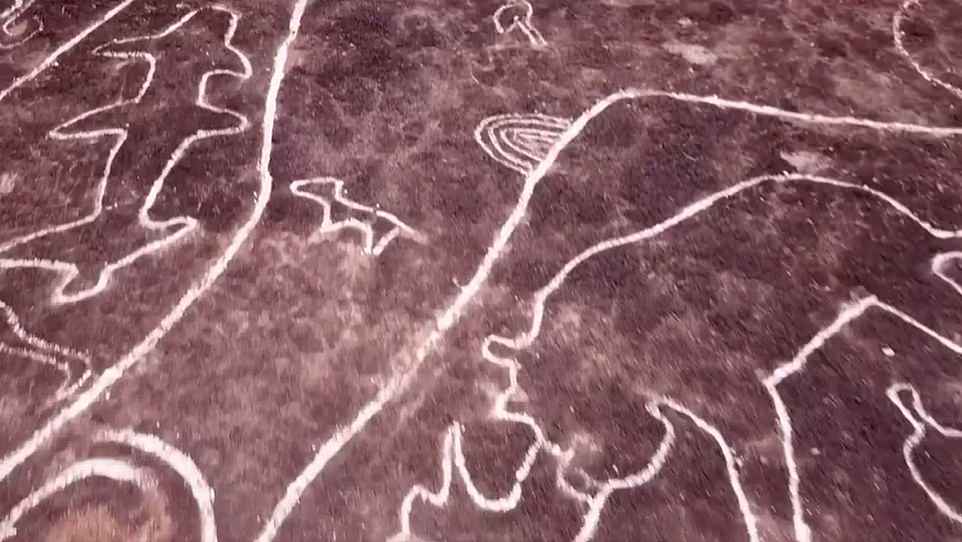
The most interesting carvings to me are the geometric designs. This seems to point to a pretty advanced civilization 10,000 or more years ago. The petroglyphs were scattered over more than 50 villages and were considered holy, they were worshiped by locals in some areas.
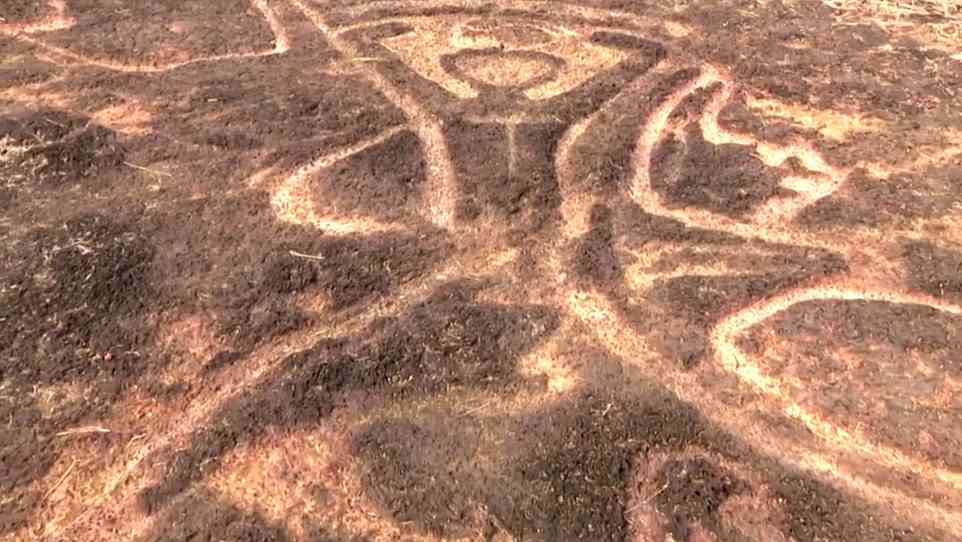
Many of the petroglyphs depict animals from Africa like hippos and rhinoceroses. I think these animals may of at one time lived in India, but the people that made the petroglyphs may have come to India from Africa.
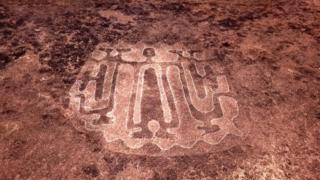
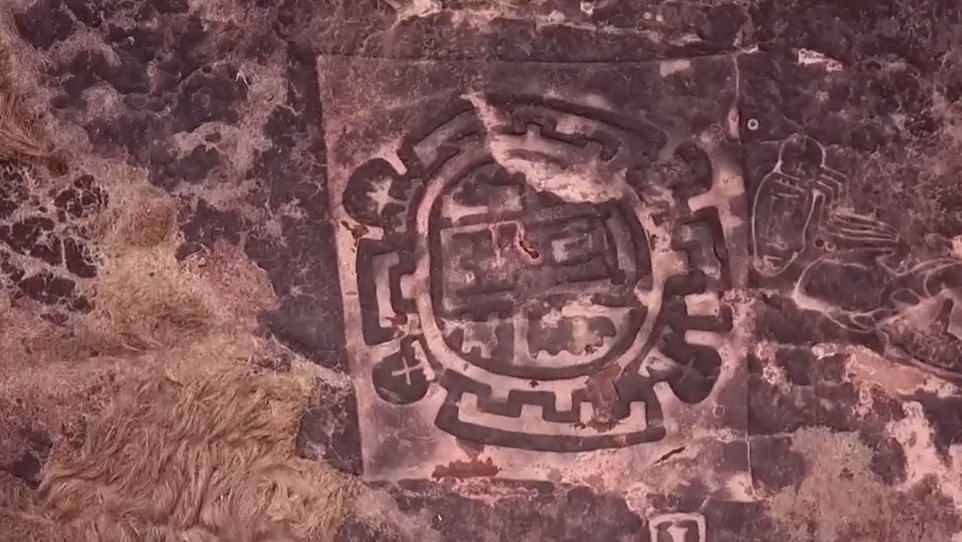
a reply to: LookingAtMars
Considering all forms of religions derive from the Indus valley, I am not surprised. The Indian plate literally plowed into modern day India, so fast that when our furthest ancestors were just emerging it was still in the middle of an ocean. The amount of geological events that happened from then to now would have made some whopping stories and oral traditions for wandering early peoples.
great find.
Edit: The last photo resembles Asian and Mayan artistry. Just some food for thought.
Considering all forms of religions derive from the Indus valley, I am not surprised. The Indian plate literally plowed into modern day India, so fast that when our furthest ancestors were just emerging it was still in the middle of an ocean. The amount of geological events that happened from then to now would have made some whopping stories and oral traditions for wandering early peoples.
great find.
Edit: The last photo resembles Asian and Mayan artistry. Just some food for thought.
edit on 1-10-2018 by strongfp because: (no reason
given)
Thanks strong, I thought it looked Mayan also.
Any guesses what that is in the bottom image, right of center?
And in the image above that is the person holding 2 "animals" upside down by the legs?
Link to a Second Story on Daily Mail
Experts baffled by mysterious prehistoric civilization in India that left behind thousands of rock carvings - including pictures of animals native to Africa
Any guesses what that is in the bottom image, right of center?
And in the image above that is the person holding 2 "animals" upside down by the legs?
Link to a Second Story on Daily Mail
Experts baffled by mysterious prehistoric civilization in India that left behind thousands of rock carvings - including pictures of animals native to Africa
edit on 1-10-2018 by LookingAtMars because: (no reason given)
a reply to: LookingAtMars
Squid perhaps? Im fairly certain the depiction underneath is a fish of sorts.
Squid perhaps? Im fairly certain the depiction underneath is a fish of sorts.
a reply to: LookingAtMars
A three D printer?
My pareidolia and my imagination have been working overtime.
A three D printer?
My pareidolia and my imagination have been working overtime.
a reply to: LookingAtMars
Imagine being the first guy to see a squid. "It came from the fish place but it wasn't a fish!! I'll just draw it the best I can and put a fish underneath. The people will understand."
Imagine being the first guy to see a squid. "It came from the fish place but it wasn't a fish!! I'll just draw it the best I can and put a fish underneath. The people will understand."
a reply to: LookingAtMars
I am looking at these images one by one.
The image that really got me tho was the second image you show cased. What drew me in was two images, the hammer head shark and the embolotherium looking thing.
I am looking at these images one by one.
The image that really got me tho was the second image you show cased. What drew me in was two images, the hammer head shark and the embolotherium looking thing.
I firmly believe the biggest conspiracy theory of our time is the cover up of the actual timeline of human history by the archaelogical community
There is just so much that doesn't make sense if you look at the "official history" of the human timeline.
And so much to show the civilization may have been far more advanced far earlier than was first thought.
There is just so much that doesn't make sense if you look at the "official history" of the human timeline.
And so much to show the civilization may have been far more advanced far earlier than was first thought.
a reply to: LookingAtMars
I'm curious as to how they date these things. I seached for a few minutes and found an article from 2012 (or at least the photo in the artcle is from 2012.)
Neolithic rock art sites found in Maharashtra
I also found the video on You Tube. Can't speak Indian but the pictures are nice. They give an idea of how large these things are that I just didn't get from the stills.
I'm curious as to how they date these things. I seached for a few minutes and found an article from 2012 (or at least the photo in the artcle is from 2012.)
The petroglyphs are may be carved by our ancestors in the Neolithic Age, that is 7000-4000 BC. It is very hard to determine the exact period, but these petroglyphs are carved using metal tools, so that is one way of determining the period (of origin).
Neolithic rock art sites found in Maharashtra
I also found the video on You Tube. Can't speak Indian but the pictures are nice. They give an idea of how large these things are that I just didn't get from the stills.
edit on 1-10-2018 by toms54 because: spelling
I think that is overstating things. I appreciate the petroglyphs as art. You find them many places, including Hawaii and all over the southwest in the
US. "Rock art" is legitimate art. But I think to claim a "lost civilization" based on these drawings is a bit much, unless you consider loosely
federated tribal groups of hunter/gatherers a "civilization." And I believe a renaissance-era civilization did exist back then. It's just that
petroglyphs don't show that. They are still an epic find.
a reply to: toms54
Tejas Garge must of had a reason for thinking it was about 12,000 years ago.
It seems the creators of the petroglyphs were more advanced relative to others of their time.
"Our first deduction from examining these petroglyphs is that they were created around 10,000BC," the director of the Maharashtra state archaeology department, Tejas Garge, told the BBC.
Tejas Garge must of had a reason for thinking it was about 12,000 years ago.
The way the petroglyphs have been drawn, and their similarity to those found in other parts of the world, have led experts to believe that they were created in prehistoric times and are possibly among the oldest ever discovered.
It seems the creators of the petroglyphs were more advanced relative to others of their time.
originally posted by: babybunnies
I firmly believe the biggest conspiracy theory of our time is the cover up of the actual timeline of human history by the archaelogical community
There is just so much that doesn't make sense if you look at the "official history" of the human timeline.
And so much to show the civilization may have been far more advanced far earlier than was first thought.
I agree with you, so many missing pages in our human history that I feel has been wiped out. But, we are slowly recovering and analyzing from the past and just guessing on what was lost.
The first drawing looks like instructions on how to stretch the hide of an animal after skinning it. Done that when I was a kid with chinchilla
skins.
Very interesting find. Not your known Indian art styles at all. Some resemblances to African and Aboriginal rock drawings, sub Saharan caves.
originally posted by: rickymouse
The first drawing looks like instructions on how to stretch the hide of an animal after skinning it. Done that when I was a kid with chinchilla skins.
I thought it looked like a stretched skin as well.
It also looks a bit like the bat signal.
a reply to: LookingAtMars
Maybe. I really don't know much about "their similarity to those found in other parts of the world," or exactly how early they began to use metal tools. That's part of why I asked. Another is that I wondered if it could be something peculiar to the marks themselves. I've seen articles about writing on stone they could examine and estimate the age of lichens and such. I don't think that applies here though and they can't analyze the strata because these seem to be very near the surface. So, how do they get the age?
Maybe. I really don't know much about "their similarity to those found in other parts of the world," or exactly how early they began to use metal tools. That's part of why I asked. Another is that I wondered if it could be something peculiar to the marks themselves. I've seen articles about writing on stone they could examine and estimate the age of lichens and such. I don't think that applies here though and they can't analyze the strata because these seem to be very near the surface. So, how do they get the age?
new topics
-
Oh, Good Gosh. “Kremlin Warns Stay Away from Greenland.”
World War Three: 50 minutes ago -
Archbisop Vigano Warns of Deep State and Deep Church
New World Order: 57 minutes ago -
A Flash of Beauty: Bigfoot Revealed ( documentary )
Cryptozoology: 6 hours ago -
Fire insurance in LA withdrawn months ago
General Conspiracies: 9 hours ago
top topics
-
Fire insurance in LA withdrawn months ago
General Conspiracies: 9 hours ago, 8 flags -
A Flash of Beauty: Bigfoot Revealed ( documentary )
Cryptozoology: 6 hours ago, 6 flags -
Bizarre Labour Party Tic Toc Video Becomes Even More Embarrassing
Regional Politics: 17 hours ago, 4 flags -
Oh, Good Gosh. “Kremlin Warns Stay Away from Greenland.”
World War Three: 50 minutes ago, 3 flags -
Archbisop Vigano Warns of Deep State and Deep Church
New World Order: 57 minutes ago, 2 flags
active topics
-
Trump says ownership of Greenland 'is an absolute necessity'
Other Current Events • 89 • : Lazy88 -
The Truth about Migrant Crime in Britain.
Social Issues and Civil Unrest • 45 • : covent -
Fire insurance in LA withdrawn months ago
General Conspiracies • 25 • : CriticalStinker -
Oh, Good Gosh. “Kremlin Warns Stay Away from Greenland.”
World War Three • 5 • : Lazy88 -
Judge rules president-elect Donald Trump must be sentenced in 'hush money' trial
US Political Madness • 87 • : tkwaz -
Los Angeles brush fires latest: 2 blazes threaten structures, prompt evacuations
Mainstream News • 299 • : StoutBroux -
A Flash of Beauty: Bigfoot Revealed ( documentary )
Cryptozoology • 4 • : CosmicFocus -
Archbisop Vigano Warns of Deep State and Deep Church
New World Order • 0 • : FlyersFan -
Planned Civil War In Britain May Be Triggered Soon
Social Issues and Civil Unrest • 33 • : sapien1982 -
Steering the Titantic from the Drydock.
Rant • 47 • : andy06shake
